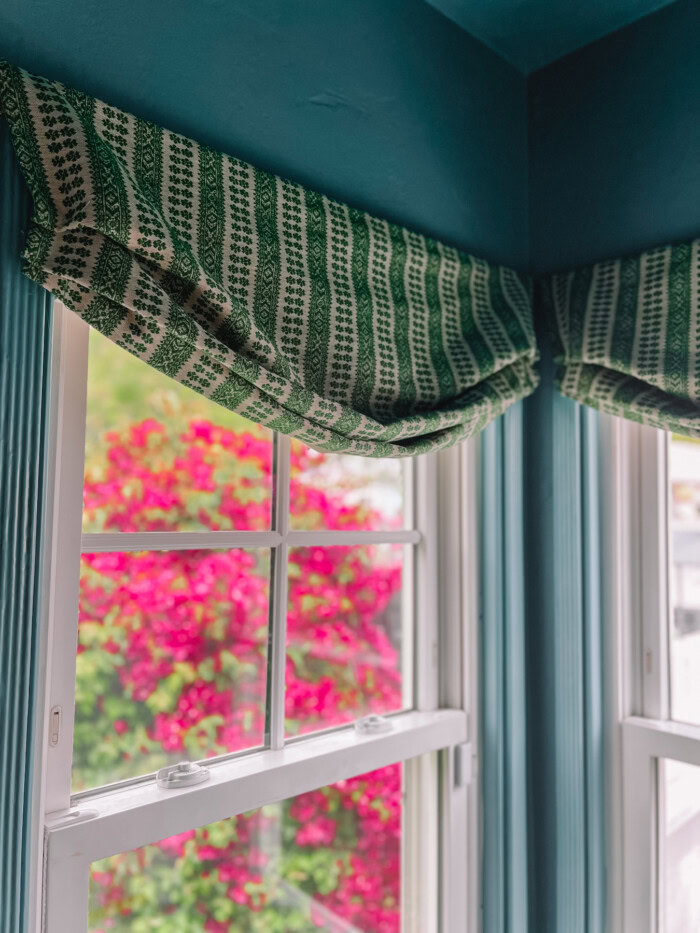
Want to add pattern and texture to your window on a budget? This faux roman shade tutorial will teach you how to do just that, to finish your room with the perfect designer touch! This is a no-sew tutorial that can easilybe adapted for those who prefer to sew.
Either way, it is a quick afternoon project that only requires a few supplies and instantly transforms any window!
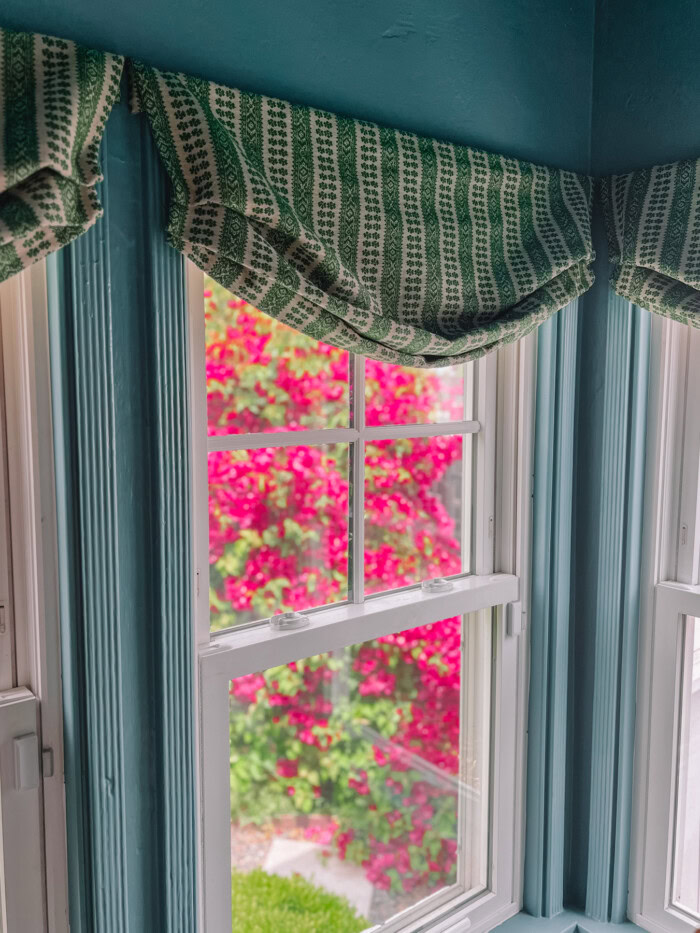
What is a faux roman shade?
A faux roman shade acts more like a valance, but looks like the classic roman shade so many designers know and love. It is not functional and doesn’t pull down, instead it can make a window feel more finished or hide unwanted hardware from other blinds on the window.
Faux roman shades are also a great idea if you don’t need privacy or light blocking shades on a window but just want something that makes the window feel more finished from a design point of view.
This is a great option if you have roller shade for cellular blinds that are functional but have hardware with a less than desirable appearance.
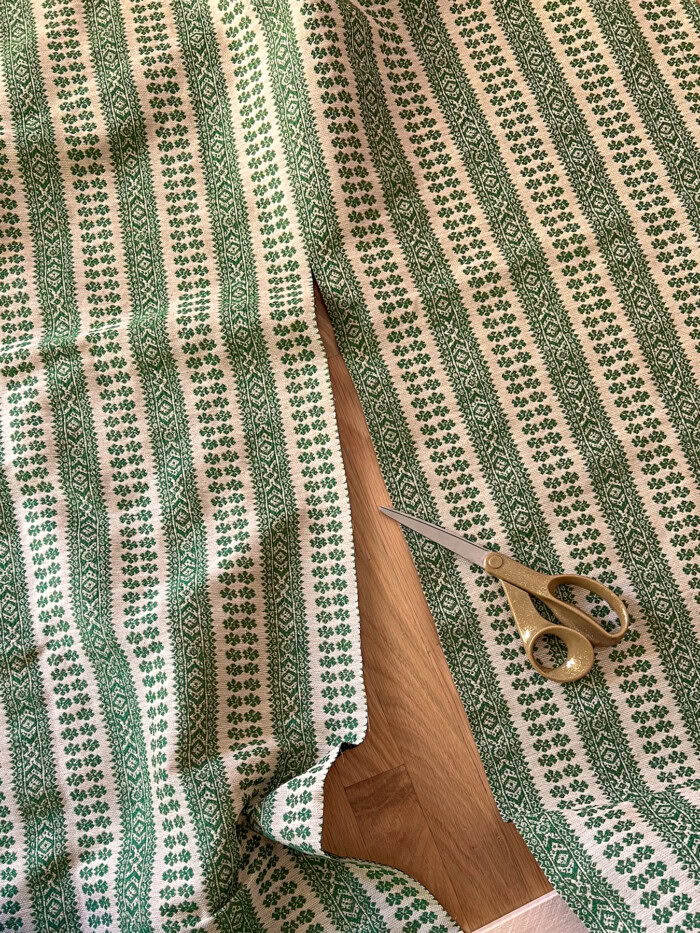
Supplies Needed
- 2×1 wood board cut to the desired width (I did the width of my window plus 1.5″ so it had a slight overhang. NOTE: If you have very thick moulding on your window, you will want a board deeper than 1″! It should be about the depth of your moulding.)
- Fabric – Cut to 2″ wider than the width of your board and 12″ longer (to account for your folds) than you want the final length to be, plus two 3″x8″ scrap pieces for finishing
- Lining Fabric – Cut at the same size as the main fabric
- Iron
- Hot glue gun
- Hem Tape, if desired (I used hot glue for this project because I used a thick fabric, so the glue lines were not visible. If you are using a thin fabric, you may want to use hem tape for finishing all edges instead!)
- Fabric Scissors
- Needle and thread (optional, for securing the folds. You could use hot glue for this as well!)
- Screws for hanging
Editor’s Note: The fabric used for this tutorial is Susan Dellis’ Patmos in Hedge Green. The lining is an oatmeal linen from Joann’s.
Step-by-Step Tutorial
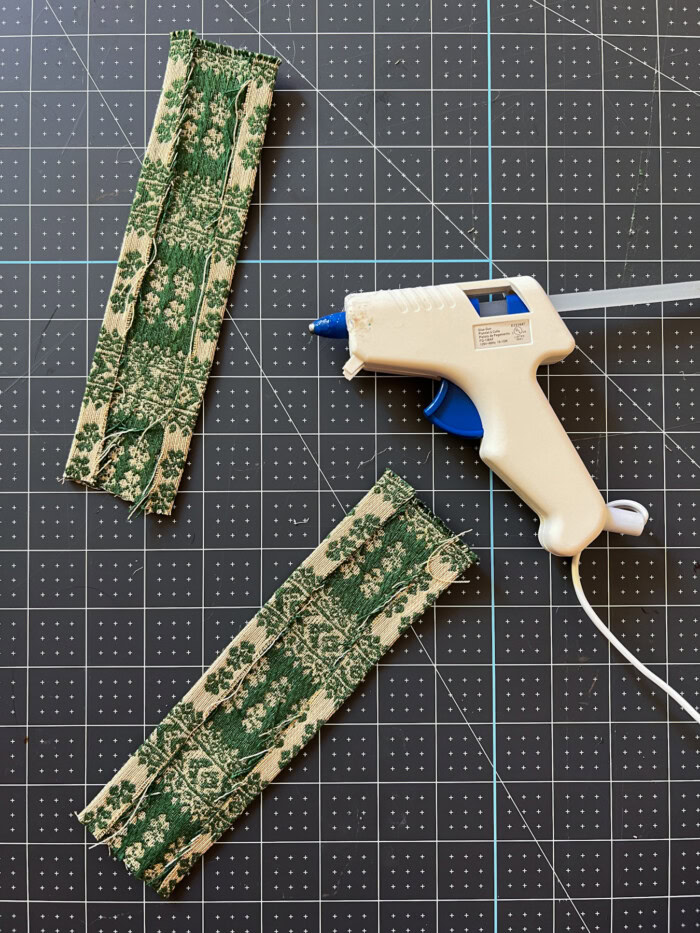
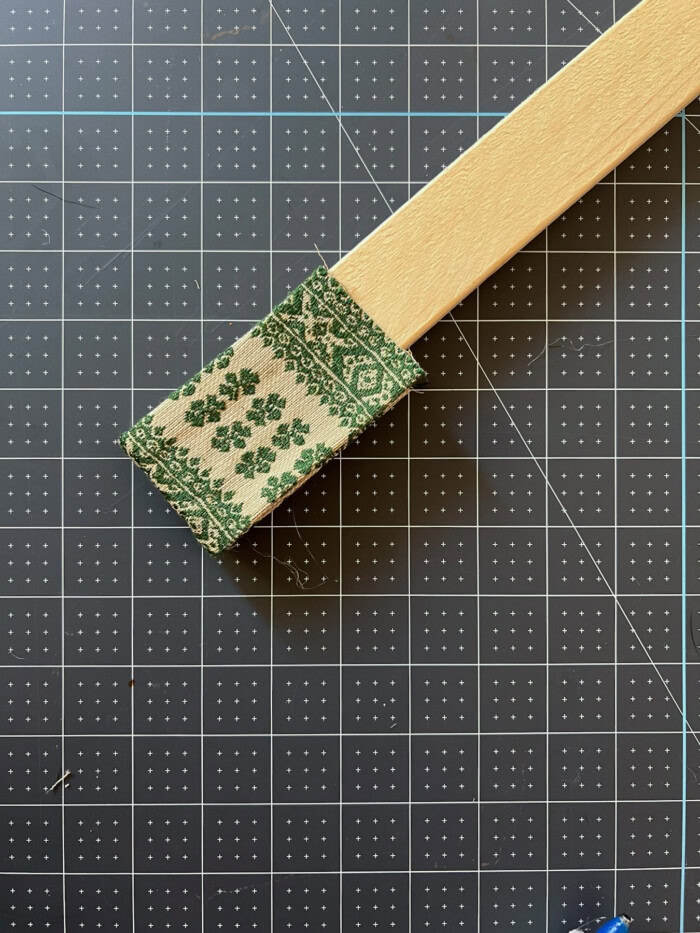
- Cover the ends of the wood board so they aren’t exposed in the finish product. Hot glue a 1/2″ hem on the top and bottom of each small fabric scrap so you have a clean hem when finished. Hot glue around each end of the board.
- Iron your fabric. Lay your fabric face down on a surface and your lining fabric, face up, on top of it. Wrong sides together. Iron fabric if needed so it is smooth and without creases.
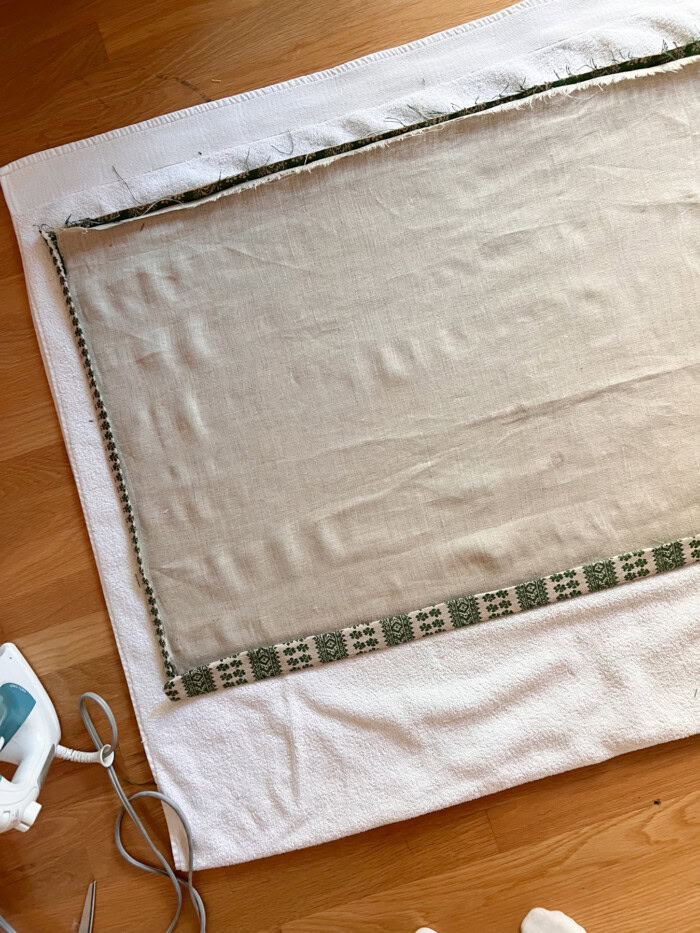
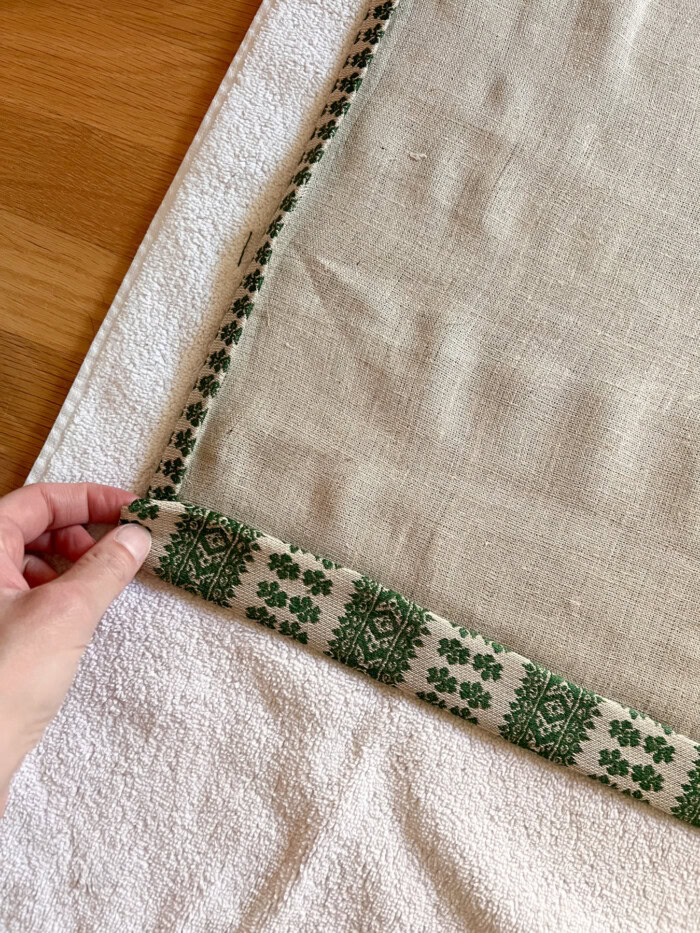
- Hem the sides of your fabric. Fold the two side edges of both of your fabrics, together, over 1/2″ and iron to make it easier for gluing. Hot glue in place. Then, fold them over another half inch to create a clean, double fold hem. Iron again. Hot glue in place again. Note: The proper way to finish a hem is to have the lining fabric’s hem finish on top of the exterior fabric. I chose to do this the easy way (as described above) instead, which is hem both all at once, but wanted to mention this for those pros out there who want to do it properly!
- Hem the bottom of your fabric. As you did on the sides, fold over 1/2″ of your fabric and iron in place. You do not need to hot glue this as you’ll be making a wider hem here and the glue will catch it more easily. Then fold over again to create a double fold hem, about 1″ this time so you have a more significant hem on the bottom and iron. Hot glue in place.
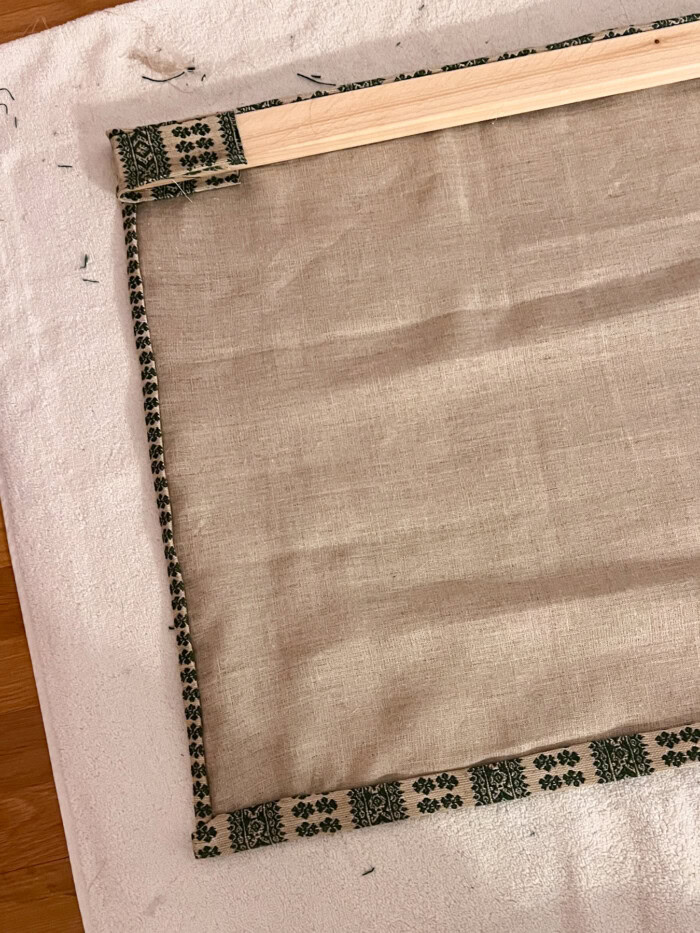
- Hem the top of your fabric. This will be getting glued to your wood board so you only need to do a single hem. Fold over 1/2″ of fabric and iron. Hot glue in place.
- Attach fabric to wood. Hot glue the top hem of your fabric to the top 1″ edge of your wood board.
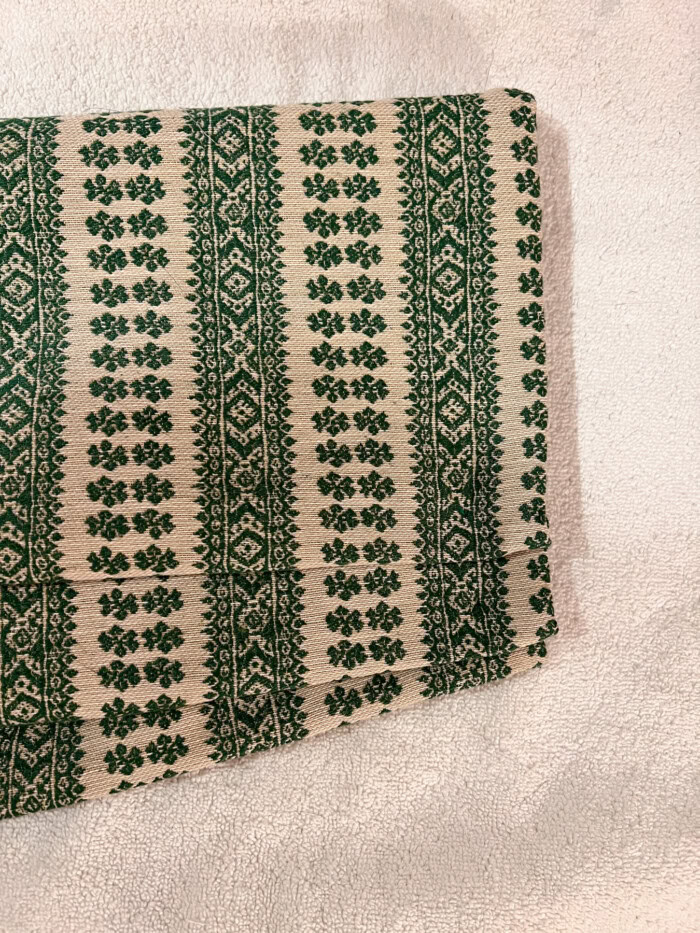
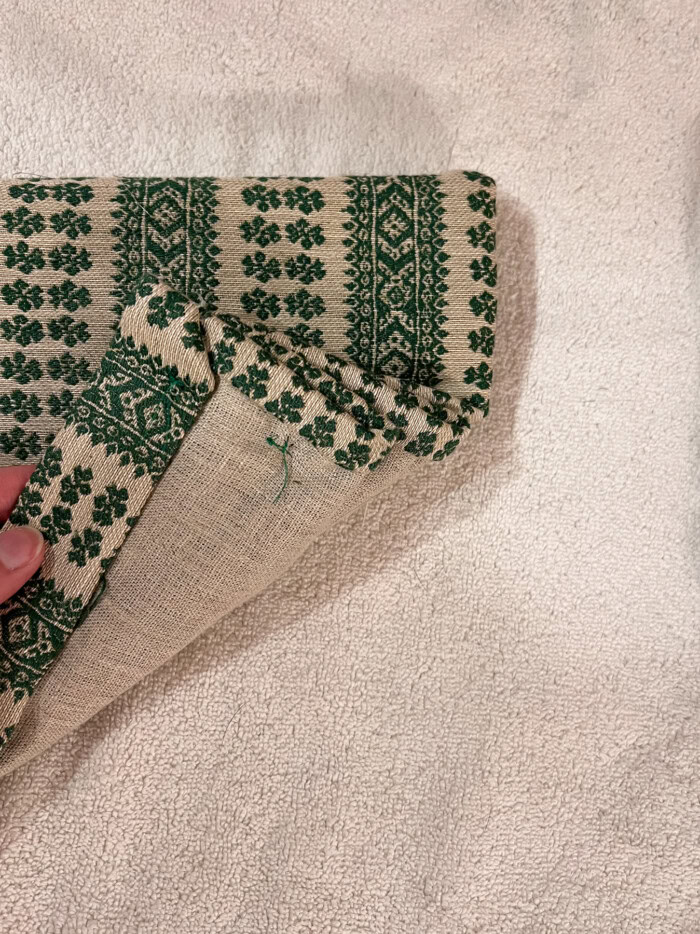
- Create folds. Create folds in your fabric as desired. The size and amount of folds will depend on the size of your final piece. Create a small hand stitch in each fold, on each end, to hold in place or do so with hot glue if you prefer not to sew. Next, if you want a traditional roman shade look with straight across folds, you may also need to tack the folds in the middle, depending on the size of your shade. If you want a relaxed roman shade look, like the style you see in the majority of photos here, pull the bottom corners up to the bottom of your last fold and tack in place.
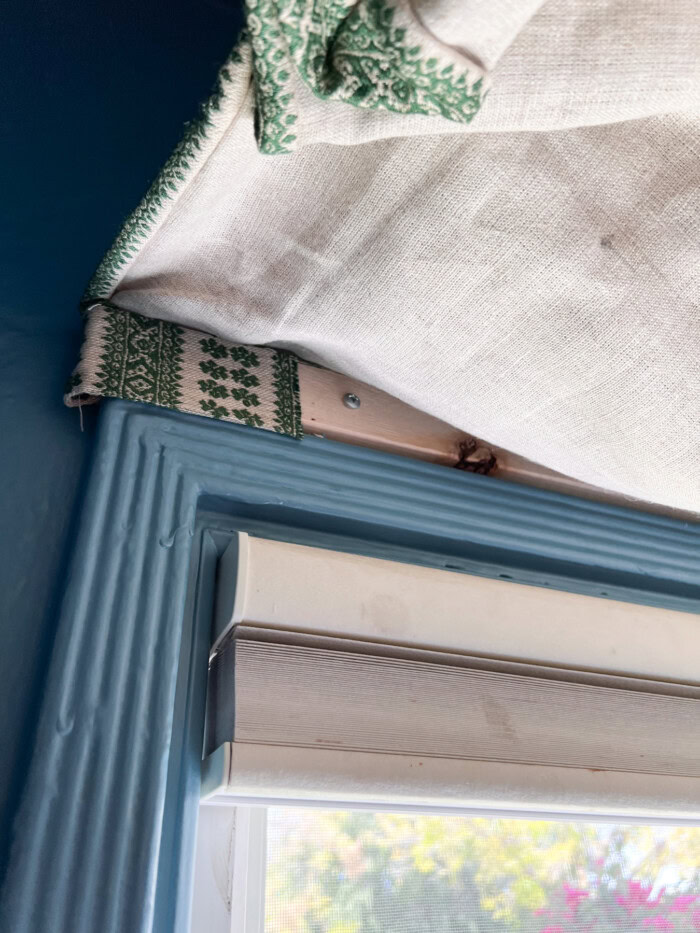
- Hang your shades. How you hang your shades will depend on what your walls are like. I used two 2″ screws to hang mine. Place as desired above your window frame. Flip the fabric up and out of the way and pre-drill holes through the wood and wall. Drill in with screws. Flip fabric back down over the wood to hide them.
- Adjust if needed. Firstly, adjust the folds if needed once hanging and then add additional stitches to tack in place if desired.
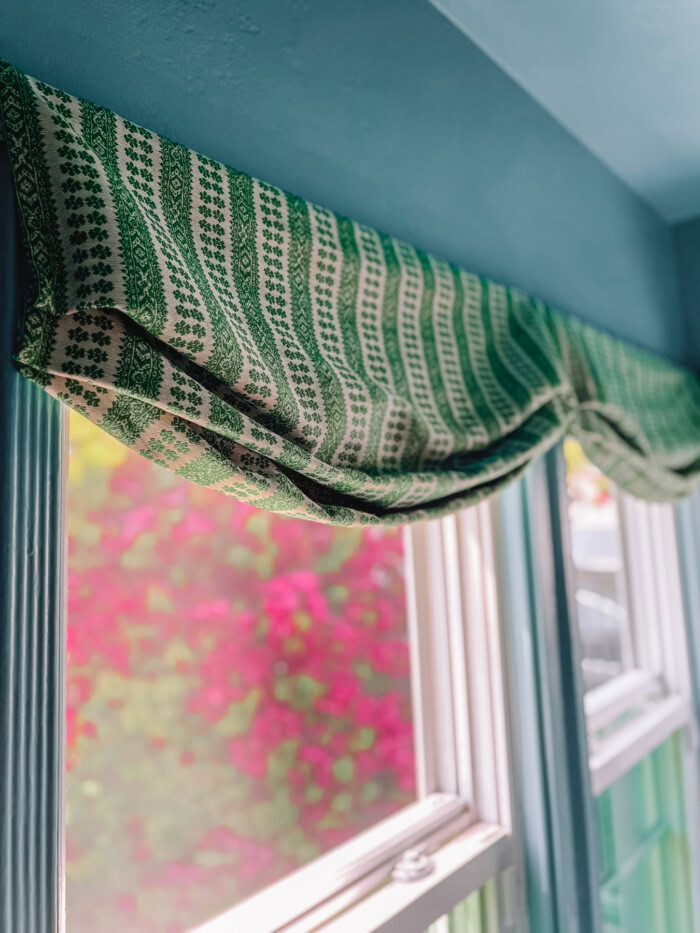
Different Styles of Roman Shades
There are many different styles of roman shades that this tutorial can be adapted to.
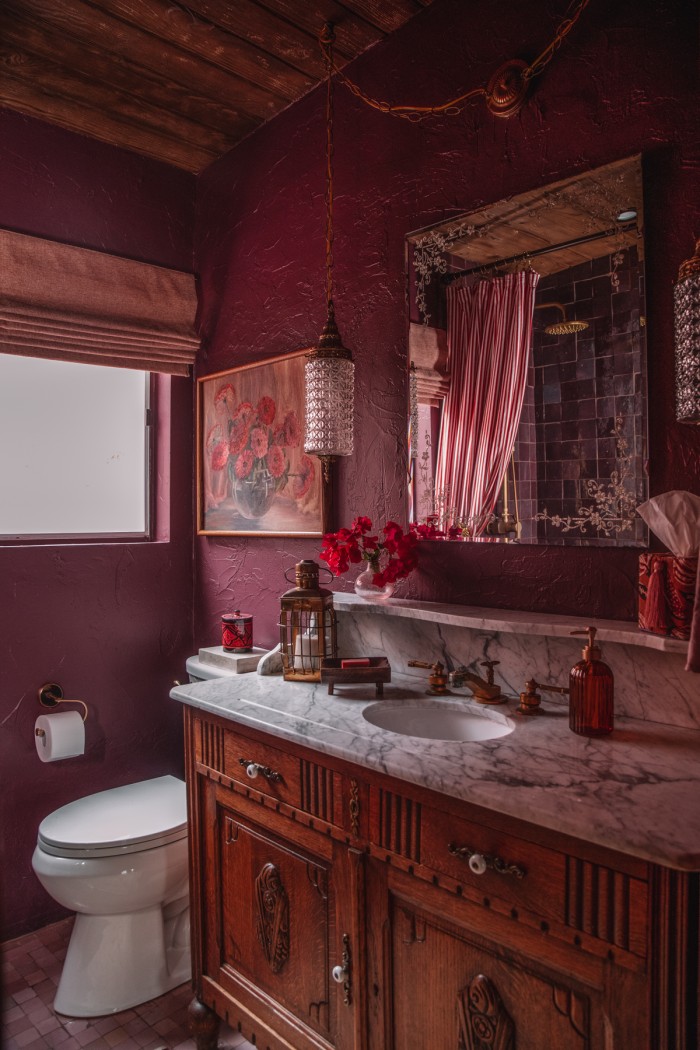
A plain or flat roman shade has straight folds that run from side to side and is the easiest style to create a faux version of. These feel very clean and sophisticated.
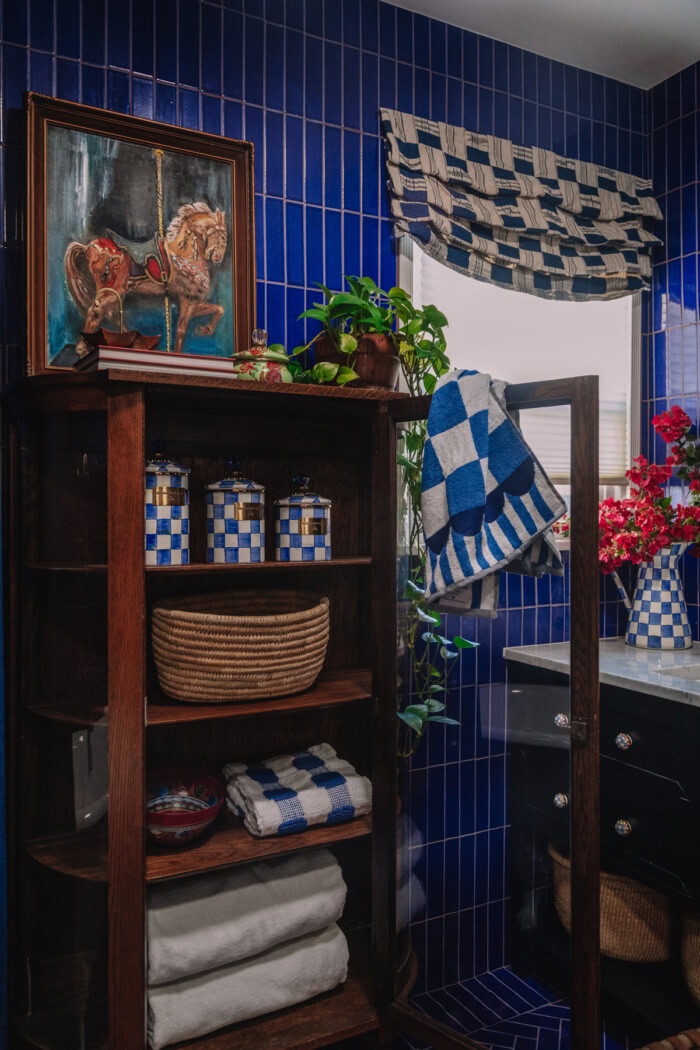
Relaxed roman shades have a slight curve to the bottom and create a more relaxed, cozy feeling in your space.
To add a contrasting element to any style roman shade, you can consider adding a ribbon border. This is especially fun in a kids room in a bright color pulled from the fabric chosen.
Whatever style you choose, these simple no-sew faux roman shade will change the entire look of your room and add a beautiful, textured layer to your space.
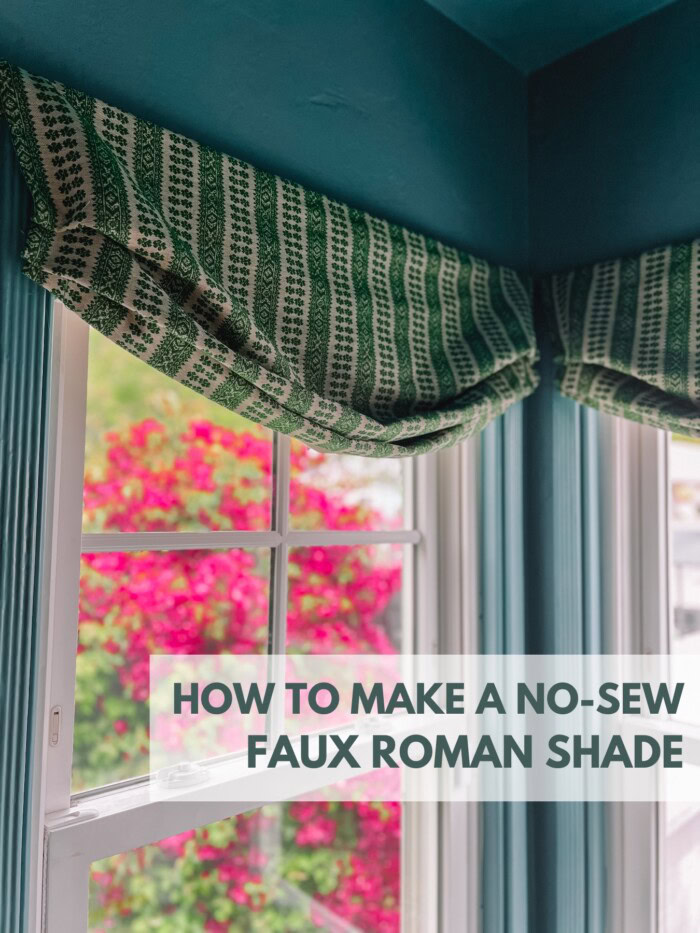
More DIY Home Projects to Try
Want to add other budget-friendly decor to your home and get the biggest bang for your buck? Try one of these tutorials!
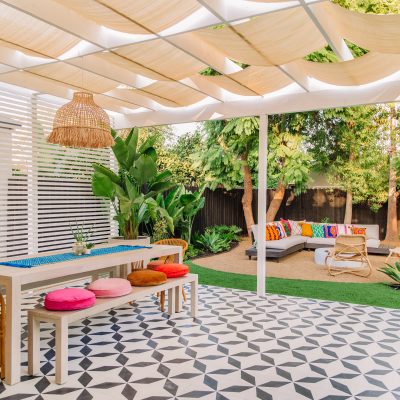
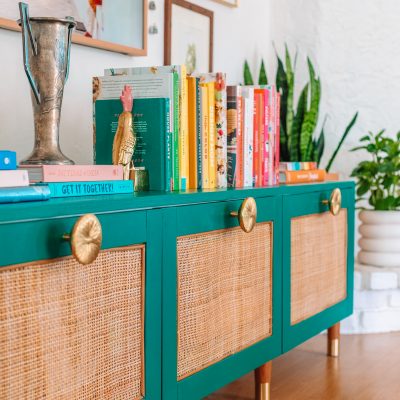
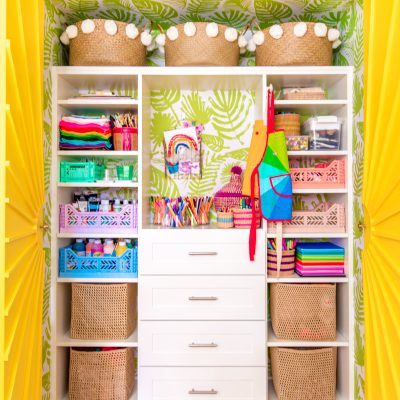



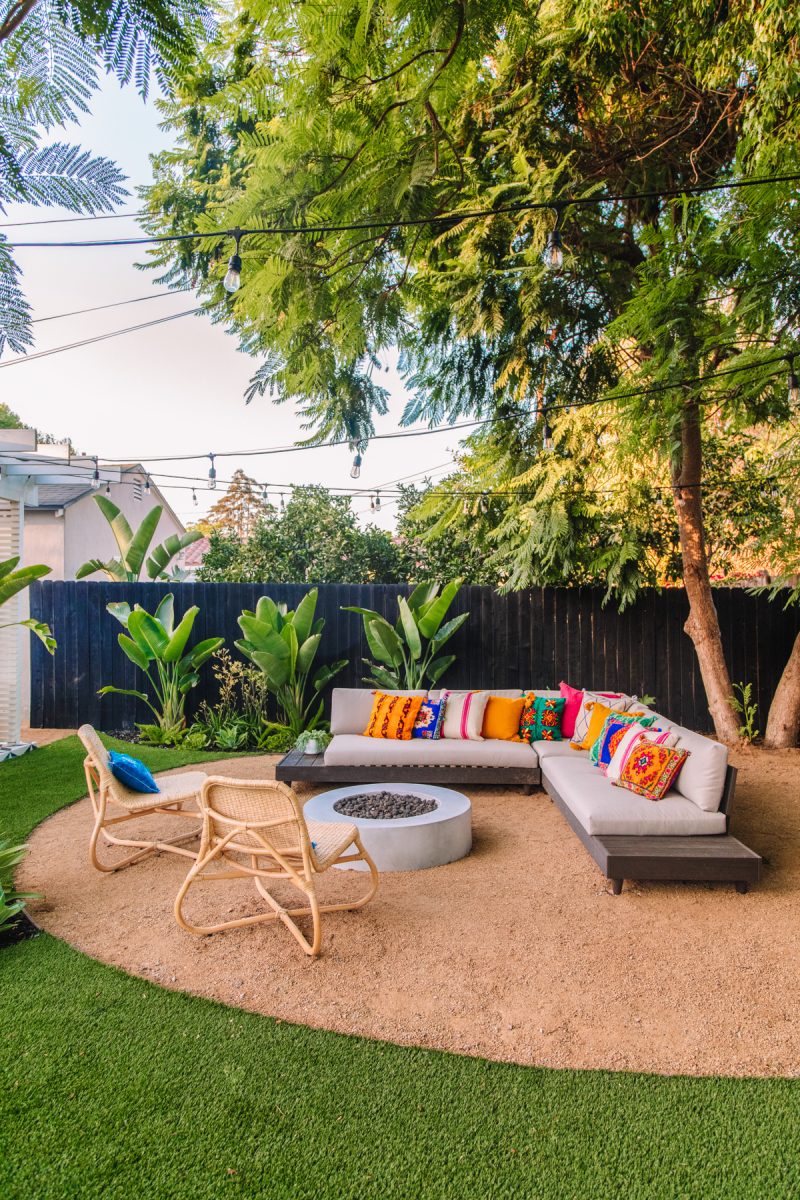

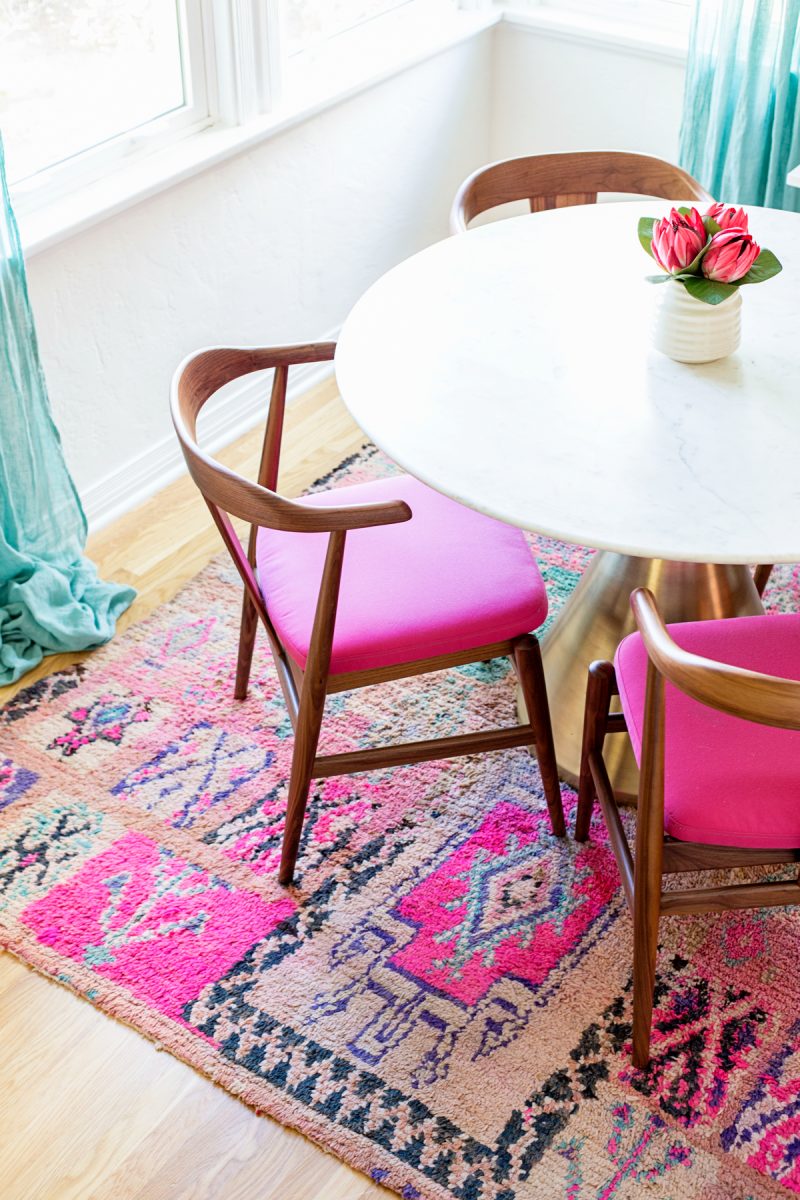


Leave a Reply